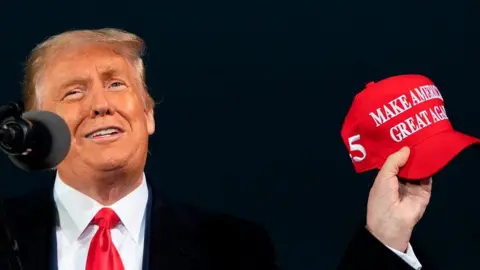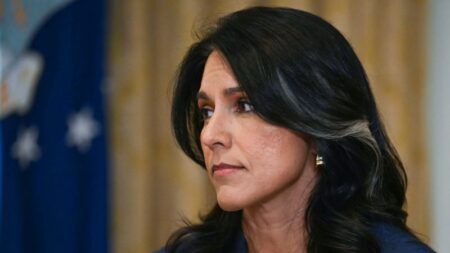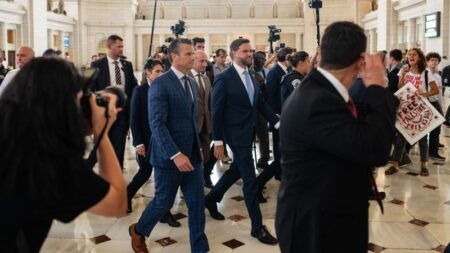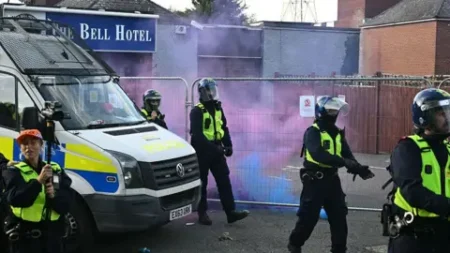**Is There a Secret Formula for Election-Winning Slogans?**
Political campaigns hinge significantly on effective messaging, encapsulated often in a memorable slogan. Notably, a well-crafted slogan can energize supporters and succinctly convey a candidate’s mission or vision. Throughout political history, some slogans have attained iconic status, resonating well beyond the confines of elections. Consider Barack Obama’s empowering phrase “Yes, We Can” or the Brexit campaign’s resolute “Take Back Control.” Each captures a national sentiment and plays a crucial role in shaping perceptions and votes.
Conversely, the political realm has seen many slogans that flop spectacularly, laden with jargon and lacking clarity. These often reflect the anxieties of campaign teams striving to resonate but ultimately failing to connect with voters. In light of this dynamic, political strategist and pollster Chris Bruni-Lowe believes he has uncovered a formula that can guide candidates toward memorable and impactful slogans.
Bruni-Lowe’s approach is based on an extensive analysis of 20,000 campaign messages worldwide. From this, he identified eight pivotal words that, when employed effectively, resonate with voters across the political spectrum. This list includes: *people, better, democracy, new, time, strong, change, together*. These terms, he asserts, function as “emotional shortcuts” that transcend borders and cultures, promising familiarity without the need for complex policy papers.
While the identified words provide a foundation for creating compelling slogans, Bruni-Lowe stresses that merely stringing them together in any order—like *Strong New Time* or *People Better Change*—will not yield success. Rather, these words must be contextually embedded within a candidate’s narrative and personal charisma; their effectiveness is notably diminished if employed by an uncharismatic candidate with unpopular policies.
The term “people” emerges as the most frequently utilized word in successful campaigns, as showcased by Bill Clinton’s resonant “Putting People First” slogan. This approach distinguishes Clinton as relatable compared to his more formal rival, George H.W. Bush. Furthermore, Bruni-Lowe acknowledges the risk of producing uninspired, generic slogans through formulaic applications—this can dull the unique positioning candidates strive for during elections.
Interestingly, some slogans defy the formula’s application. Boris Johnson’s “Get Brexit Done” serves as a prime example. This slogan was uniquely tailored to address a singular, pressing issue, demonstrating that highly specific phrases can sometimes resonate powerfully while deviating from broader concepts. However, Bruni-Lowe argues that these bespoke slogans tend to erupt during an election cycle but quickly lose relevance as circumstances change.
Bruni-Lowe’s contributions are notable; he crafted slogans like “Change Politics For Good” for Nigel Farage’s Brexit Party and “It’s Time” for Jakov Milatovic during the latter’s impactful 2023 presidential campaign in Montenegro. His analyses extend to historical slogans, including Donald Trump’s *Make America Great Again* (MAGA), which, despite its rootedness in earlier iterations like Ronald Reagan’s *Let’s Make America Great Again*, shows how effective branding can yield lasting political influence.
In contrast, the rhetorical journeys of slogans such as “Take Back Control” highlight a trend towards brevity in political messaging. The efficacy of three-word slogans heightens as seen with the UK Labour Party’s recent election campaign centered around the word “Change,” contrasting sharply with the Conservatives’ convoluted “Clear Plan, Bold Action, Secure Future.”
The integration of artificial intelligence and neuroscience into political messaging is ushering a new era for campaign strategies. Candidates are increasingly leveraging AI to tailor messages to individual voters’ concerns via social media, allowing real-time adaptations based on emotional responses gauged through techniques like functional magnetic resonance imaging (fMRI).
As these evolving methods could reshape democratic politics, they pose a challenge to the catchy, slogan-driven campaigns of yesteryears. The charm and infectious quality inherent in slogans, demonstrated through Dwight Eisenhower’s campaign jingle “I Like Ike,” may become less prevalent as technology facilitates increasingly personalized political messaging.
In summary, while Chris Bruni-Lowe’s eight-word formula offers a strategic base for crafting effective political slogans, the fundamental elements—genuine charisma, connectedness to voters, and cultural resonance—remain paramount in the crowded landscape of contemporary electoral campaigns. As we navigate these developments, the future of political messaging may diverge significantly from the nostalgic reliance on catchy slogans, demanding innovative approaches forged in the heart of modern technology and voter engagement dynamics.











